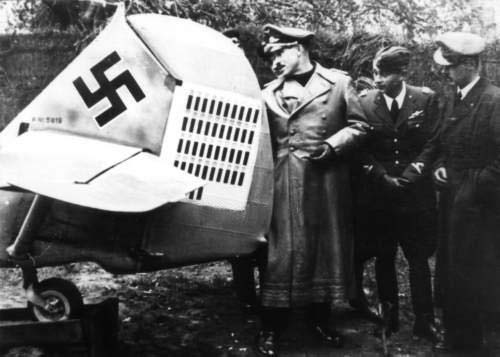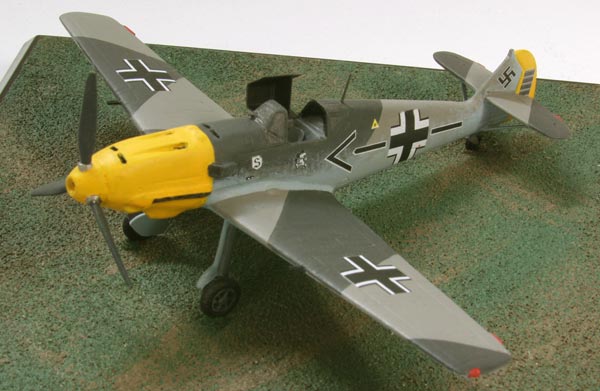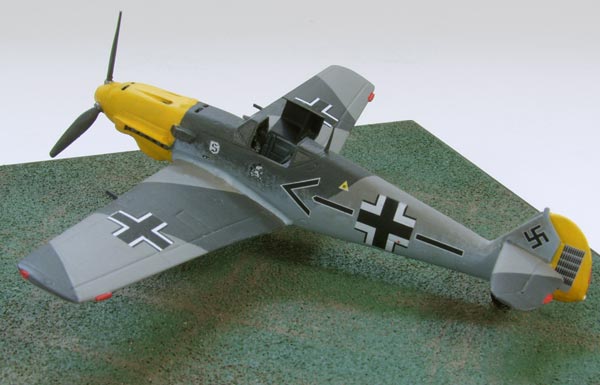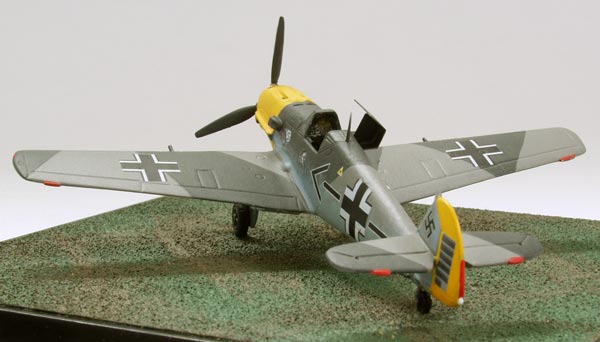Messerschmitt Bf 109E-4/N
Messerschmitt Bf 109E-4/N ‘Black Chevron and Bars’ Wk Nr 5819
Obst Adolf Galland, Geschwaderkommodore JG 26 ‘Schlageter’, Dec 1940.
The Messerschmitt Bf 109E-3 was the variant that became familiar during the Battle of Britain, noted among other features for the engine-mounted MG FF/M 20 mm cannon that fired through the spinner, giving the Bf 109 a characteristic ‘flat-fronted’ appearance. In the E-4 sub-type that followed, and was in widespread use by the end of the year, this weapon had been deleted giving it a somewhat sharper profile, and was replaced by two wing mounted MG FF.
Adolf Galland was Staffelkapitan of III/JG.26 in July 1940, and by the end of August had been promoted to be Kommodore of the Geschwader, at this time equipped with the Bf 109E-3 before the arrival of the E-4 of which only 250 aircraft were produced. A mere 20 Bf 109E-4/Ns were produced and differed from the standard ‘Emil’ in the new DB 601N engine fed on 96 octane C3 petrol increasing the output by 75hp at a higher altitude. One of the best-known ‘Emils’, Galland’s Bf 109E-4/N carries the chevron and bars markings of a Geschwaderkommodore and the stylised ‘S’ on a shield of JG.26, as well as the yellow nose and rudder, an instant identification marking that was a carry-over from the Battle of Britain. Galland’s personal ‘Mickey Mouse’ symbol was first used with the Condor Legion during the Spanish Civil War, and there are fifty-seven “victory bars” on the rudder. Another personal feature was the mounting of a telescope (rather than a telescopic sight) through the windscreen to facilitate identification of friend or foe at a greater range. Galland would add only three more victories before replacing this aircraft with a Bf 109F.

Scale 1:72 Wingspan 5.41″ (137.5 mm)
Base size 6.37″ (162 mm) square (No. 4)
Weight not including base 5.5 ozs (153 grams)
Total number of models produced 127




